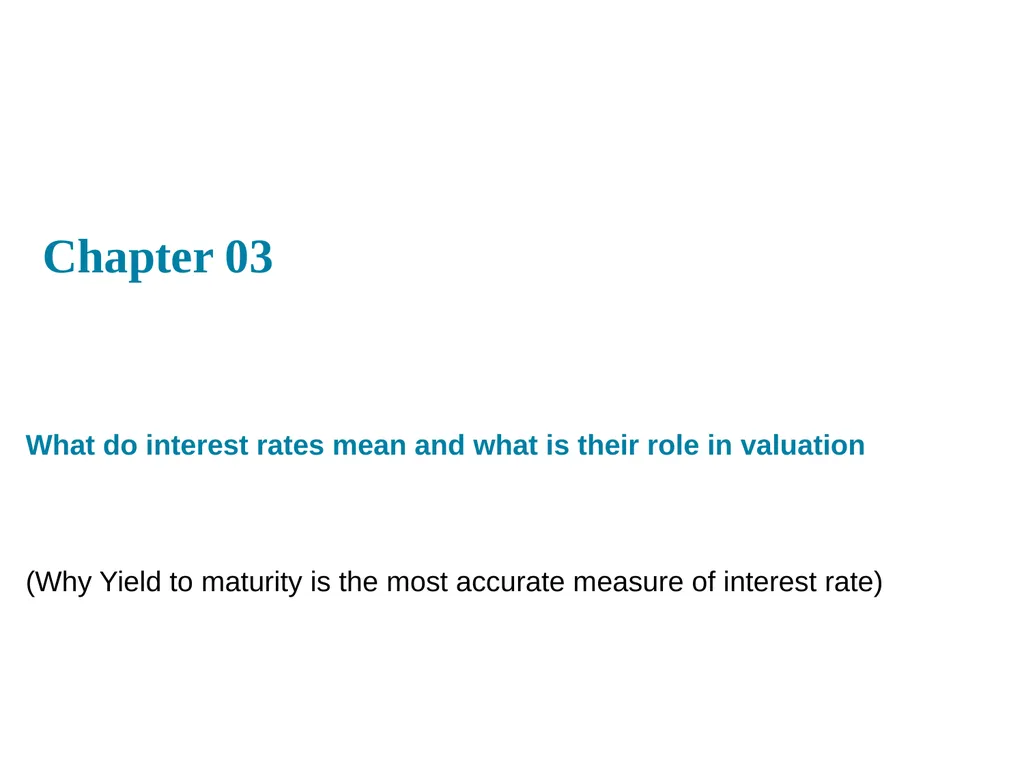
Author : natalia-silvester | Published Date : 2025-05-16
Description: Chapter 03 What do interest rates mean and what is their role in valuation (Why Yield to maturity is the most accurate measure of interest rate) Learning Objectives Calculate the present value of future cash flows and the yield to maturityDownload Presentation The PPT/PDF document "" is the property of its rightful owner. Permission is granted to download and print the materials on this website for personal, non-commercial use only, and to display it on your personal computer provided you do not modify the materials and that you retain all copyright notices contained in the materials. By downloading content from our website, you accept the terms of this agreement.
Here is the link to download the presentation.
"Chapter 03 What do interest rates mean and what is"The content belongs to its owner. You may download and print it for personal use, without modification, and keep all copyright notices. By downloading, you agree to these terms.













